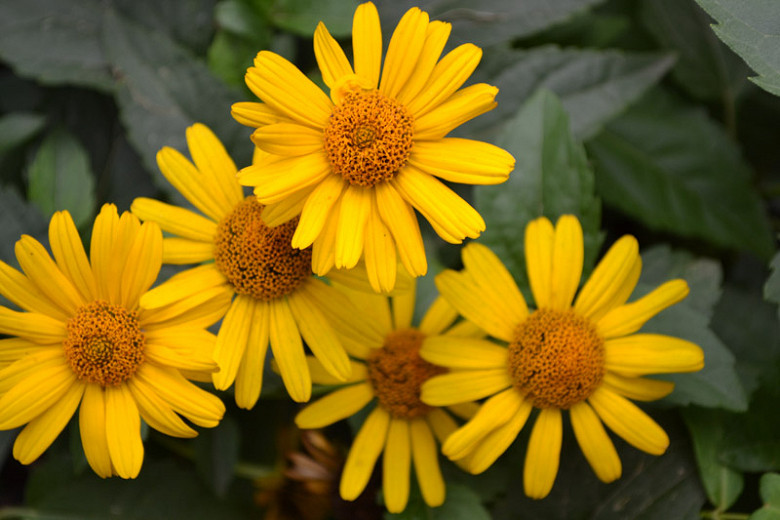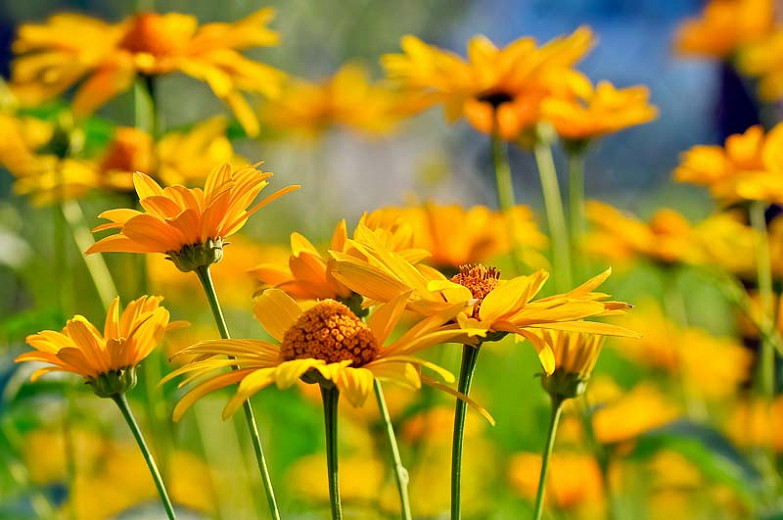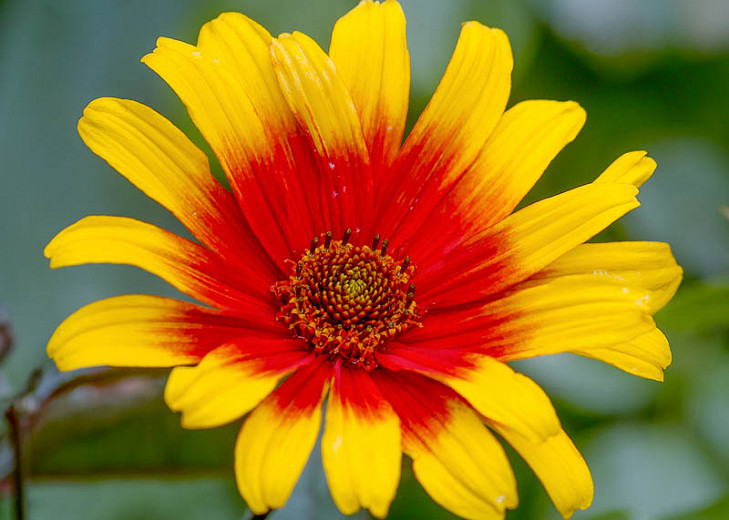Heliopsis helianthoides (False Sunflower)
Heliopsis helianthoides (False Sunflower) is a showy short-lived perennial forming upright clumps of stiff, branched stems boasting sunflower-like flowers, 2-3 in. across (5-7 cm) from early summer to fall. Each blossom features yellow-orange rays surrounding a cone-shaped brownish-yellow center disk. They are visited by bees, butterflies, hummingbirds and other pollinating insects.
Heliopsis helianthoides (False Sunflower) is a showy short-lived perennial forming upright clumps of stiff, branched stems boasting sunflower-like flowers, 2-3 in. across (5-7 cm) from early summer to fall. Each blossom features yellow-orange rays surrounding a cone-shaped brownish-yellow center disk. They are visited by bees, butterflies, hummingbirds and other pollinating insects. The stems are clothed in pairs of opposite, ovate, toothed leaves, 6 in. long (15 cm). A valuable addition to the landscape with its profusion of bright glowing daisies over a long season, False Sunflower is an undemanding plant which provides excellent, midsummer color. Hardy and easy to grow, it is a beautiful garden perennial for dry sites.
- Grows up to 3-6 ft. tall (90-180 cm) and 2-4 ft. wide (60-120 cm).
- Performs best in full sun in average, dry to medium, well-drained soils. This plant is not fussy about soils and tolerates a wide range of soil conditions, including poor soils, dry soils and clay soils. Light shade is also tolerated, although the plants might tend to flop and hence will require some support. Drought tolerant once established.
- Excellent choice for perennial borders where their dazzling flowers are welcomed in any color scheme. Perfectly suited to the cutting garden, naturalized plantings.
- Deadhead spent flowers to promote new blooms. Cut back after flowering.
- No serious pest or disease issues. Keep an eye out for aphids.
- Propagate by seed in fall or early spring. Large clumps can be divided, but it is fairly difficult.
- Native to central and eastern North America.
Requirements
| Hardiness | 3 – 9 |
|---|---|
| Heat Zones | 1 – 9 |
| Climate Zones | 1, 1A, 1B, 2, 2A, 2B, 3, 3A, 3B, 4, 5, 6, 7, 8, 9, 10, 11, 14, 15, 16, 17, 18, 19, 20, 21, 22, 23, 24, H1, H2 |
| Plant Type | Perennials |
| Plant Family | Heliopsis – Ox-Eye Sunflowers |
| Exposure | Full Sun |
| Season of Interest | Summer (Early,Mid,Late)Fall |
| Height | 3' – 6' (90cm – 180cm) |
| Spread | 2' – 4' (60cm – 120cm) |
| Spacing | 18″ – 48″ (45cm – 120cm) |
| Water Needs | Low, Average |
| Maintenance | Low |
| Soil Type | Chalk, Clay, Loam, Sand |
| Soil pH | Acid, Alkaline, Neutral |
| Soil Drainage | Moist but Well-Drained, Well-Drained |
| Characteristics | Cut Flowers, Showy |
| Native Plants | United States, Midwest, Illinois, Indiana, Iowa, Kansas, Michigan, Minnesota, Missouri, Nebraska, North Dakota, Ohio, South Dakota, Wisconsin, Northeast, Connecticut, Delaware, Maine, Massachusetts, Maryland, New Hampshire, New Jersey, New York, Pennsylvania, Rhode Island, Vermont, Pacific Northwest, Washington, Rocky Mountains, Colorado, Southeast, Alabama, Arkansas, Florida, Georgia, Kentucky, Louisiana, Mississippi, North Carolina, South Carolina, Tennessee, Virginia, West Virginia, Southwest, New Mexico, Oklahoma, Texas |
| Tolerance | Clay Soil, Drought, Dry Soil, Rocky Soil |
| Attracts | Bees, Butterflies, Hummingbirds |
| Garden Uses | Beds and Borders |
| Garden Styles | Cutting Garden, Informal and Cottage, Prairie and Meadow |




